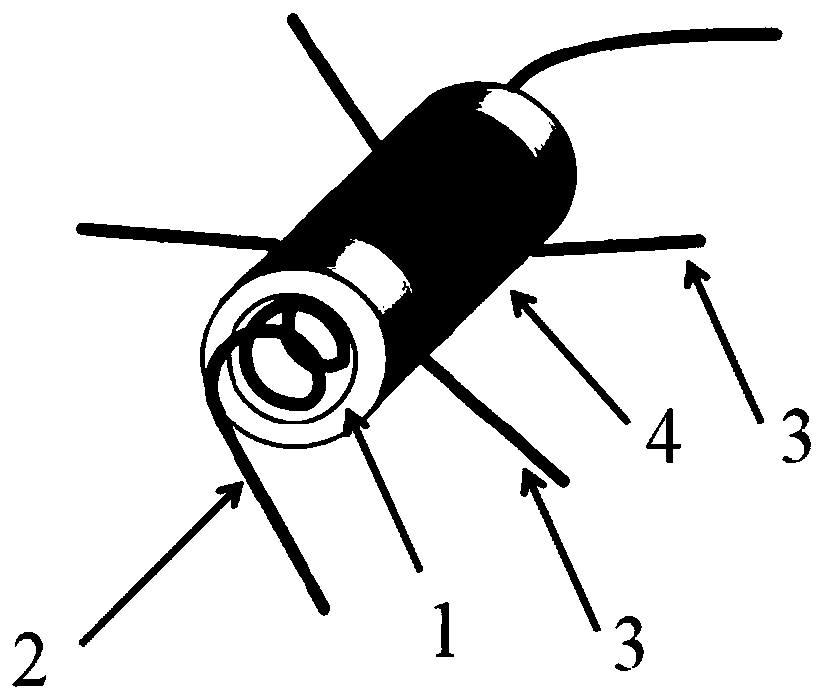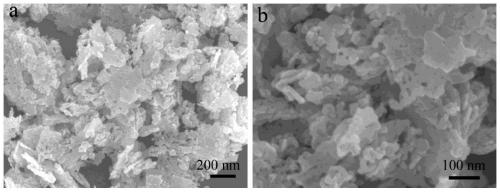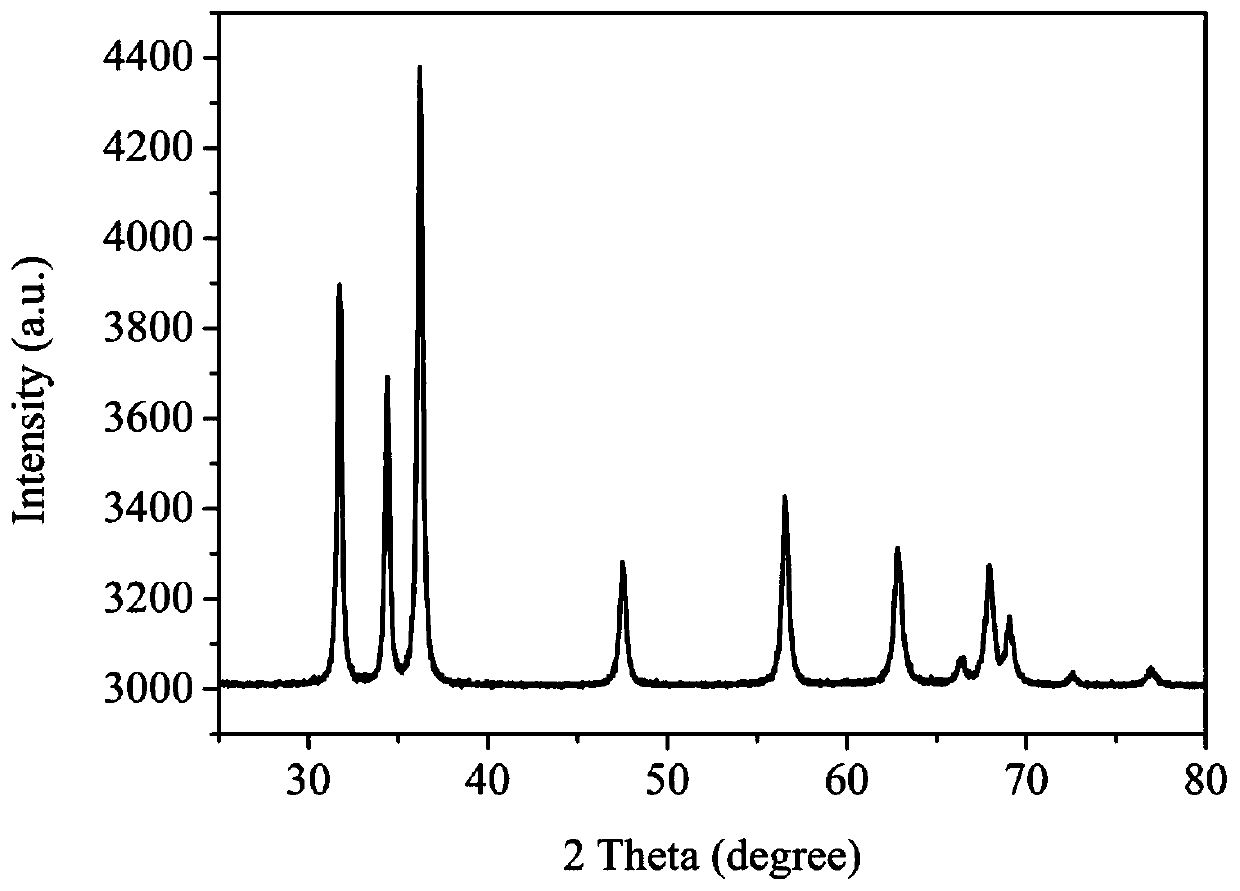Resistance type NO2 sensor based on stannic oxide modified zinc oxide nanometer material, and manufacture method thereof
A zinc oxide nanometer and tin dioxide technology, which is applied in the analysis of materials, material resistance, and material analysis through electromagnetic means, can solve the problem of interference sensitivity, the small number of surface active sites of pure zinc oxide, and poor sensitivity and other problems, to achieve the effect of simple manufacturing process, excellent gas-sensing characteristics, and high sensitivity
- Summary
- Abstract
- Description
- Claims
- Application Information
AI Technical Summary
Problems solved by technology
Method used
Image
Examples
Embodiment 1
[0030] (1) 1g of zinc oxide powder was heat-treated at 60°C for 12h under vacuum conditions;
[0031] (2) Add the zinc oxide powder in (1) to the toluene solution, the volume of toluene is 50mL, and ultrasonically disperse it evenly; then add 0.2g dimethyl tin dichloride to the above solution, and stir at room temperature for 0.5h , to obtain a mixed solution of dimethyl tin dichloride and zinc oxide;
[0032] (3) Add 4 mL of triethylamine to the mixed solution of dimethyl tin dichloride and zinc oxide in (2), and continue to stir at room temperature for 2 hours; the above solution is centrifuged, washed with ethanol, and dried to obtain organostanane-modified Zinc oxide material;
[0033] (4) calcining the zinc oxide material modified by organostannane prepared in (3) at a temperature of 500° C. for 2 hours to obtain a surface functionalized zinc oxide material;
[0034] (5) The surface functionalized zinc oxide powder prepared in step (4) is mixed with deionized water in a...
Embodiment 2
[0037] (1) 2g of zinc oxide powder was heat-treated at 60°C for 12h under vacuum conditions;
[0038] (2) Add the zinc oxide powder in (1) to the toluene solution, the volume of toluene is 50mL, and ultrasonically disperse it evenly; then add 0.4g dimethyl tin dichloride to the above solution, and stir at room temperature for 0.5h , to obtain a mixed solution of dimethyl tin dichloride and zinc oxide;
[0039] (3) Add 4 mL of triethylamine to the mixed solution of dimethyl tin dichloride and zinc oxide in (2), and continue to stir at room temperature for 2 hours; the above solution is centrifuged, washed with ethanol, and dried to obtain organostanane-modified Zinc oxide material;
[0040] (4) calcining the zinc oxide material modified by organostannane prepared in (3) at a temperature of 500° C. for 2 hours to obtain a surface functionalized zinc oxide material;
[0041] (5) The surface functionalized zinc oxide powder prepared in step (4) is mixed with deionized water in a...
Embodiment 3
[0044] (1) 3g of zinc oxide powder was heat-treated at 70°C for 18h under vacuum conditions;
[0045] (2) Add the zinc oxide powder in (1) to the toluene solution, the volume of toluene is 60mL, and ultrasonically disperse it evenly; then add 0.5g dimethyl tin dichloride to the above solution, and stir at room temperature for 0.5h , to obtain a mixed solution of dimethyl tin dichloride and zinc oxide;
[0046] (3) Add 5 mL of triethylamine to the mixed solution of dimethyl tin dichloride and zinc oxide in (2), and continue to stir at room temperature for 3 hours; the above solution is centrifuged, washed with ethanol, and dried to obtain organotanane-modified Zinc oxide material;
[0047] (4) calcining the zinc oxide material modified by organostannane prepared in (3) at a temperature of 550° C. for 3 hours to obtain a surface functionalized zinc oxide material;
[0048] (5) The surface functionalized zinc oxide powder prepared in step (4) is mixed with deionized water in a ...
PUM
| Property | Measurement | Unit |
|---|---|---|
| thickness | aaaaa | aaaaa |
| length | aaaaa | aaaaa |
| electrical resistance | aaaaa | aaaaa |
Abstract
Description
Claims
Application Information
 Login to View More
Login to View More - R&D
- Intellectual Property
- Life Sciences
- Materials
- Tech Scout
- Unparalleled Data Quality
- Higher Quality Content
- 60% Fewer Hallucinations
Browse by: Latest US Patents, China's latest patents, Technical Efficacy Thesaurus, Application Domain, Technology Topic, Popular Technical Reports.
© 2025 PatSnap. All rights reserved.Legal|Privacy policy|Modern Slavery Act Transparency Statement|Sitemap|About US| Contact US: help@patsnap.com



